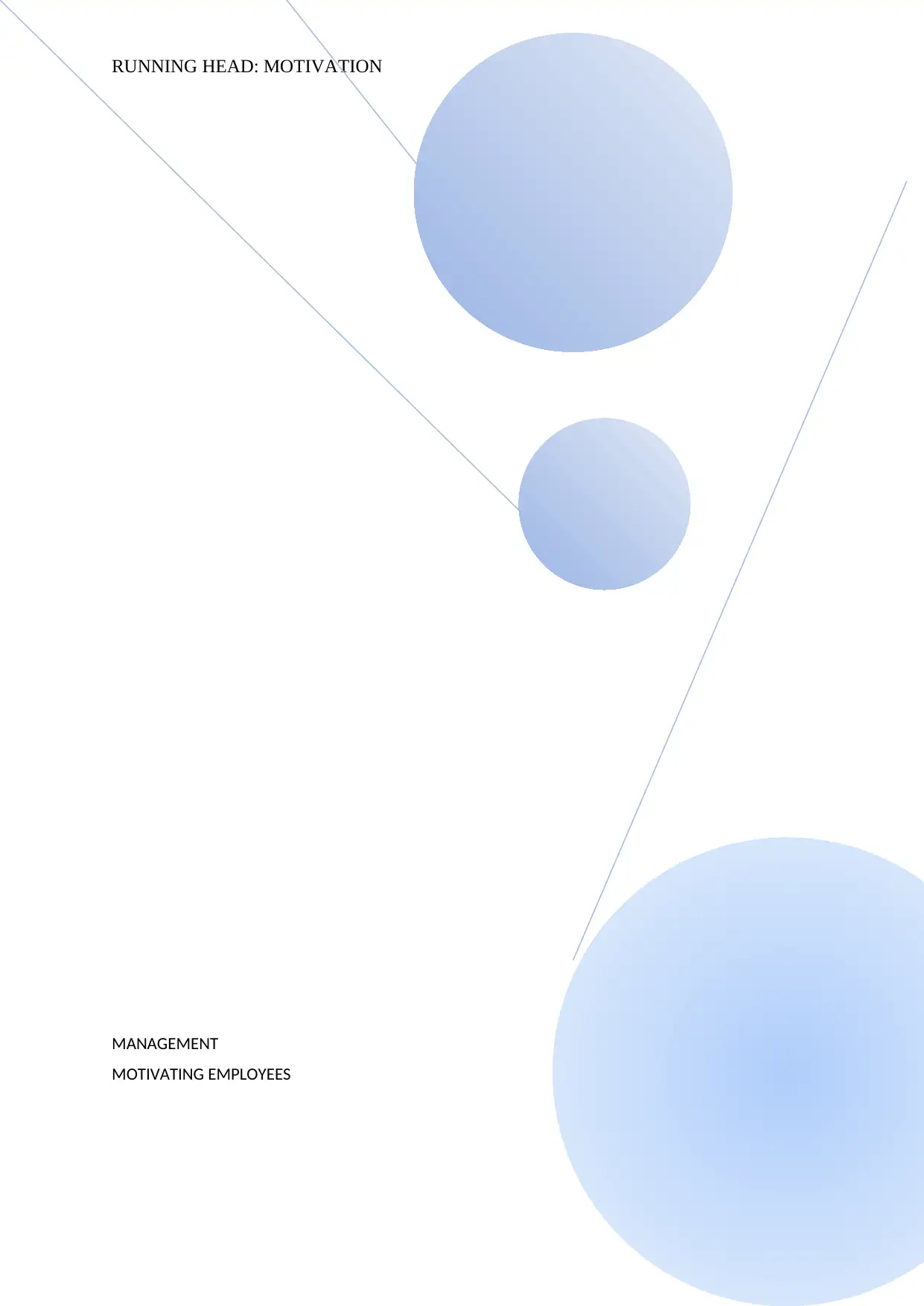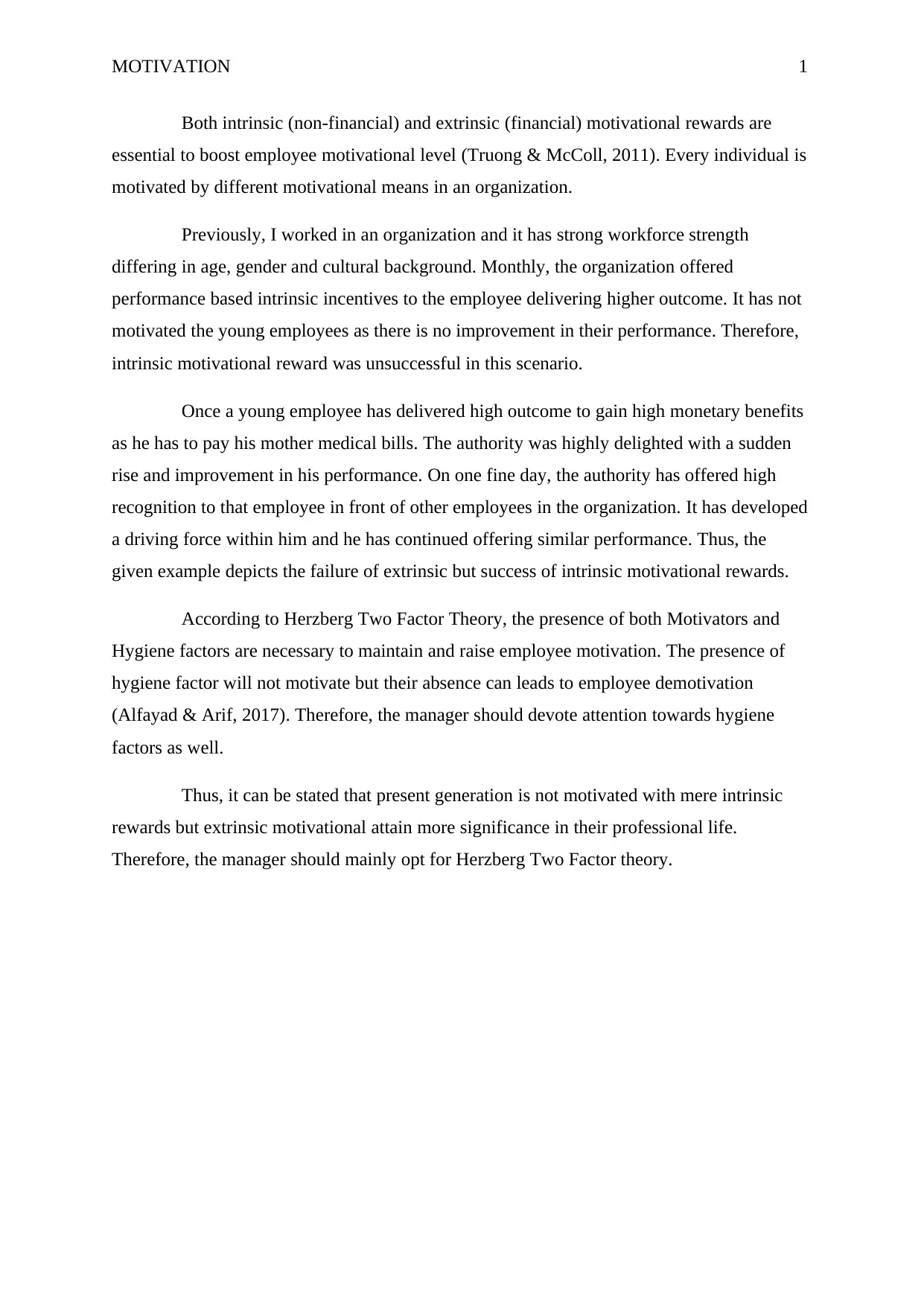Motivation Management: Intrinsic vs. Extrinsic Rewards in Workplace
VerifiedAdded on 2022/08/19
|3
|384
|12
Essay
AI Summary
This essay examines the crucial role of both intrinsic (non-financial) and extrinsic (financial) rewards in motivating employees, highlighting that different individuals respond to different motivational approaches. It presents a personal experience where intrinsic incentives failed to motivate young employees, while extrinsic rewards proved successful for an employee facing financial pressure. The essay then connects these observations to Herzberg's Two-Factor Theory, emphasizing the importance of both motivators and hygiene factors in maintaining and enhancing employee motivation. It concludes that managers should consider the significance of extrinsic motivation for the present generation and primarily adopt Herzberg's Two-Factor theory to improve employee performance.
1 out of 3










![[object Object]](/_next/static/media/star-bottom.7253800d.svg)